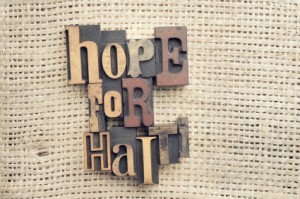When was the last time you thought about Haiti? If you’re anything like me, it was probably a long time ago. It’s been almost exactly two years since the devastating earthquake that brought Haiti to the forefront of the international consciousness, and a lot of things have happened since then. Kim Jong-Il’s death, the Arab Spring, continuing struggles in the Middle East, Occupy Wall Street—too many things have happened just in the past month to keep Haiti in our minds. So why do I bring it up now? Well, the 2nd anniversary of the 2010 earthquake that killed 200,000 and displaced 1.5 million is today, January 12th, so now seems like an appropriate time to take a look at what’s going on in the country now.
It’s been a difficult couple of years for Haiti. As if the earthquake was not devastating enough, shortly after it occurred a cholera outbreak infected nearly 500,000 people  and killed 7,000. The epidemic is now known to have been caused by a 28-year-old mentally disturbed man who frequently walked naked through town to bathe and drink from a river which was contaminated with raw sewage, and the poor living conditions following the earthquake facilitated the spread of the deadly disease, further damaging an already devastated nation. Paralyzing political crises haven’t helped the situation much, either. So, it’s no surprise that recovery has been painfully slow.
and killed 7,000. The epidemic is now known to have been caused by a 28-year-old mentally disturbed man who frequently walked naked through town to bathe and drink from a river which was contaminated with raw sewage, and the poor living conditions following the earthquake facilitated the spread of the deadly disease, further damaging an already devastated nation. Paralyzing political crises haven’t helped the situation much, either. So, it’s no surprise that recovery has been painfully slow.
But there has been recovery; it might be moving very slowly, but it is happening. In October of 2011 Haiti passed a major benchmark: clearing half of the debris caused by the earthquake, which hopefully can be crushed and re-used to build new houses. The UNDP has created 300,000 temporary jobs and helped build critical capacities (training judges, supporting the construction sector, placing experts in public administration, for example), reduced disaster risk, and cured 60 percent of TB patients. Neighborhoods once lit by candles are now lit with electricity. Mariott and a local cell phone carrier partnered to build a hotel, which hopefully will bring much-needed income to the country. In the last two years, the country has shifted from a humanitarian crisis requiring massive foreign aid to one in the recovery phase, where the focus is more on what Haitians can do to rebuild the country than on humanitarian aid.
Indeed, the only way that Haiti can rebuild and eventually experience economic development and growth is if the local communities are involved in the process. Everyone, from the UNDP to Haitian President Michel Martelly, is looking for ways to get Haitians involved in the process. Foreign aid is unsustainable, and, in this case, was never highly effective to begin with. Donor nations have dispersed only about 53% of the reconstruction funds they pledged, and were selective with the funds they did send, preferring to contribute to projects with more cache, like hospitals or schools, over more necessary—but less important-sounding—projects like debris removal. Worker training and job creation are essential, as is infrastructure improvement, as these things will allow Haitians to reduce their dependency on aid.
 President Martelly hopes to create 500,000 jobs within the next three years, which will reduce the 40% unemployment rate. His government also hopes to reduce the number of steps needed to set up a business, and to make it easier for foreigners to own property; these initiatives, if they pass, will not only encourage job creation, but will encourage foreign investment, which will in turn boost economic development in a sustainable way. So, all is not lost in Haiti. Conditions are still bad, but there is hope for reconstruction and for economic growth, especially with such a pro-business president at the helm. I hope that the next two years treat Haiti better than the previous two.
President Martelly hopes to create 500,000 jobs within the next three years, which will reduce the 40% unemployment rate. His government also hopes to reduce the number of steps needed to set up a business, and to make it easier for foreigners to own property; these initiatives, if they pass, will not only encourage job creation, but will encourage foreign investment, which will in turn boost economic development in a sustainable way. So, all is not lost in Haiti. Conditions are still bad, but there is hope for reconstruction and for economic growth, especially with such a pro-business president at the helm. I hope that the next two years treat Haiti better than the previous two.
And now I would like to leave you with a short video that will show you how much things have changed in the last two years, and hopefully it will leave you with a sense of hope for the future.


